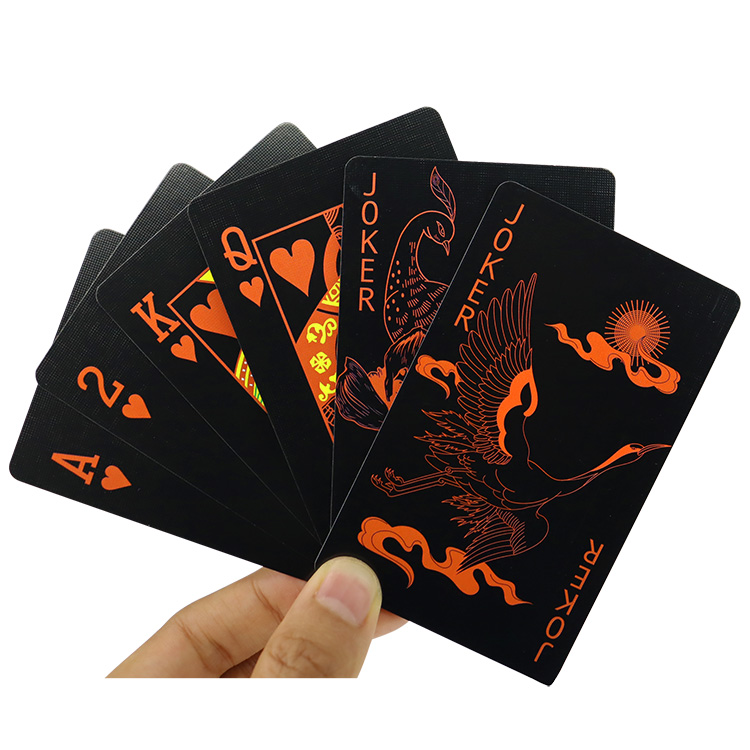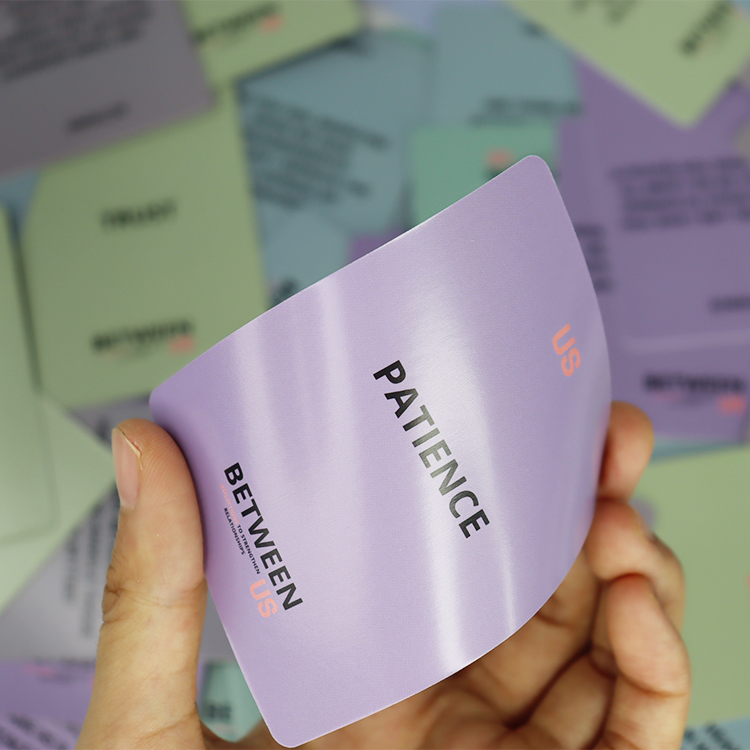The Winning Hand: How Color Psychology Shapes Playing Card Design
Have you ever wondered why the classic red and blue Bicycle deck feels so instantly recognizable and trustworthy? Or why a jet-black deck exudes an aura of mystery and sophistication? This is no accident. Beyond mere aesthetics, the colors chosen for a playing card deck are a deliberate application of color psychology—a powerful tool that influences our emotions, perceptions, and even our gameplay. For designers, understanding this relationship is the key to creating decks that are not only beautiful but also functionally brilliant and emotionally resonant.
This article will deal the cards on how color psychology is expertly used in playing card design, shaping everything from brand identity to a player's strategic focus.
The Foundation: Why Color Matters in Card Design
Playing cards are a unique design challenge. They must be functional (easy to read during fast-paced games), aesthetic (pleasing to collect and hold), and psychological (evoking specific feelings). Color is the primary vehicle for achieving all three.
-
Functionality: High contrast between pips and the card background is crucial for quick identification. The traditional black (spades & clubs) and red (hearts & diamonds) scheme is a timeless example of perfect functional contrast on a white base.
-
Aesthetics: Color creates beauty and desirability, turning a simple tool into a work of art and a collectible item.
-
Psychology: Colors trigger subconscious associations that can set the mood for a game, influence a player's confidence, or define a deck's entire narrative.
Decoding the Palette: What Colors Communicate in Card Design
Let's break down the common colors used in decks and the psychological messages they send:
1. Red: Energy, Power, and Danger
-
Psychology: Red is the most intense color. It raises energy levels, increases heart rate, and is associated with passion, excitement, power, and in some contexts, warning or danger.
-
Application in Cards: Red is used to command attention. It’s the color of choice for classic, high-energy games like Poker and Hearts. It can make a deck feel traditional, powerful, and exciting. On the flip side, it can also be used to signal "high value" or "warning" in custom decks.
-

-
2. Blue: Trust, Calm, and Focus
-
Psychology: Blue evokes feelings of calm, stability, trust, and intelligence. It's known to have a calming effect on the mind and aids concentration.
-
Application in Cards: Blue decks are often perceived as more serious, strategic, and reliable. Think of classic blue Bicycle decks—they feel trustworthy and are a staple for magicians and cardists who require focus and precision. Blue is excellent for games involving deep strategy, like Bridge.
3. Black: Elegance, Mystery, and Authority
-
Psychology: Black symbolizes power, elegance, formality, death, mystery, and the unknown. It's a bold and authoritative color.
-
Application in Cards: Black decks are instantly striking. They often target collectors and magicians, conveying a sense of sophistication, luxury, and mystery. A black deck can make a magician's performance feel more dramatic and a card flourish look more sleek and modern.
-

4. White & Gold/Silver: Purity, Luxury, and Exclusivity
-
Psychology: White represents purity, simplicity, and cleanliness. Metallic gold and silver are immediately associated with wealth, prestige, luxury, and high quality.
-
Application in Cards: White decks often feel clean, modern, and minimalist. When accented with gold or silver foil, the deck is elevated to a luxury item. This combination screams "premium," "limited edition," and "collector's item," making it highly desirable and often more expensive.
5. Green: Growth, Luck, and Wealth
-
Psychology: Green is strongly tied to nature, growth, harmony, and luck. Of course, it's also the color of money, associating it with wealth and prosperity.
-
Application in Cards: Green is a natural choice for decks themed around casinos, money, or nature. It can create a feeling of a "lucky" deck or be used to evoke a sense of calm, organic beauty.
6. Purple: Royalty, Creativity, and Magic
-
Psychology: Historically, purple dye was rare and expensive, making it the color of royalty, nobility, luxury, and ambition. It also carries a strong association with creativity, spirituality, and magic.
-
Application in Cards: Purple is a popular choice for decks with a fantasy, mystical, or royal theme. It immediately suggests a sense of grandeur and otherworldliness, perfect for telling a magical story.
-

Strategic Applications: Beyond the Basics
Modern designers use color psychology in advanced ways:
-
Theme Reinforcement: A deck based on a "blood moon" legend will heavily feature red and black to evoke danger and mystery. A "deep sea" deck will use blues and greens to create a calm, mysterious, or ominous atmosphere.
-
Target Audience Appeal: Decks for cardists (performative card flourishers) often use color-shifting schemes and high-contrast patterns to make the movement of the cards more visually dynamic. Decks for poker players might stick to traditional colors to maintain seriousness and focus at the table.
-
Creating Rarity: Many decks use a standard color for a mass-market version and a rare, alternate color (e.g., a gold foil version vs. a standard red one) to create a sense of exclusivity and drive collector demand.
A Note on Cultural Context
It's vital to remember that color meanings can shift across cultures. While red means luck and prosperity in China, it can mean warning or danger in other contexts. While a white deck feels clean in the West, it can be associated with mourning in some Eastern cultures. Global brands must be mindful of these nuances when designing for an international market.
(Conclusion)
The next time you pick up a deck of cards, take a moment to observe its colors. Are you holding a classic blue deck meant for a serious game of strategy? A sleek black deck designed for a mesmerizing magic trick? Or a luxurious gold-foiled deck created as a collectible artifact? The colors are speaking to you, shaping your experience before a single card is even dealt.Color psychology is the silent partner in playing card design, a powerful force that blends art, science, and strategy to create a truly compelling product. For designers, mastering this palette is the first step to creating the next iconic deck.
-
-
-

Your Legacy, Forged in Gold: The Enduring Power of Gold-Foiled Playing Cards in Corporate Branding

Affirmations in Action: How Affirmation Cards Provide Immediate Support for Life's Challenging Moments

2026 Trends in Custom Playing Cards: What Businesses Should Know

The Tarot Social: Transform Your Gatherings with Interactive Tarot Card Experiences

The Art of Tarot: Exploring the Aesthetics and Symbolism Behind Timeless Tarot Cards
About customized services
Do you offer samples?
Yes! We can provide samples of our card materials and finishes. Please contact us to request samples relevant to your project.
Can I customize the design of my cards?
Absolutely! We offer full customization options, from card design and size to finishes and packaging. Our design team is ready to collaborate with you to create the perfect look.
About cooperation process
How long does the OEM process take?
The time depends on the complexity of the project, but generally OEM orders take about 6 weeks from design confirmation to delivery.
About price and payment
How can I get a quote?
Getting a quote is easy! Simply fill out our contact form or call us directly with your project details, and we’ll get back to you with a tailored quote promptly.
After-sales support
What is your return policy?
We stand behind the quality of our products. If you receive a defective item, please contact us within 30 days for a replacement or refund. Customized orders are generally non-refundable unless there's an error on our part.






WE’D LOVE TO 
FROM YOU
Please send us your inquiry details; our team will contact you ASAP.
20+ years of experience in custom playing cards, game cards, tarot cards, flashcards, and board games, as well as paper and paperboard box manufacturing.

bbilaser
sq_AL